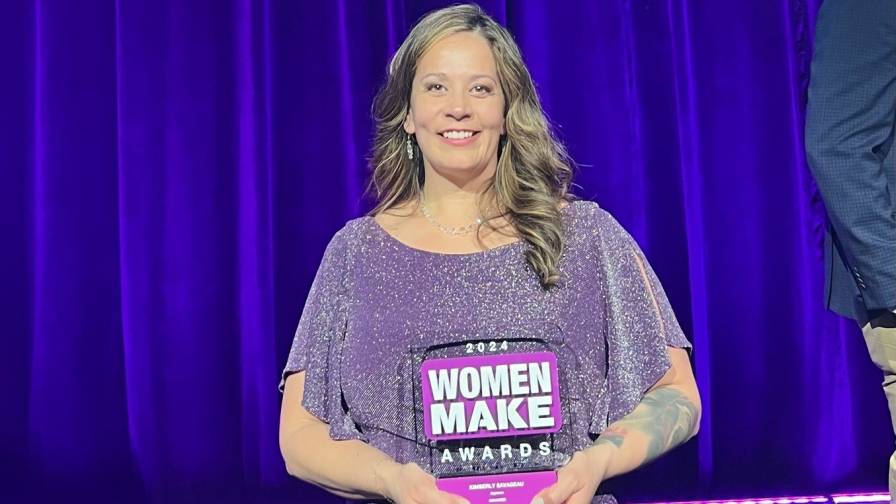Illinois Water Quality And Agriculture: Taking A Proactive Approach
When you consider the question of water stewardship for agriculture, it’s incredibly impressive that the state of Illinois — with perhaps the largest concentration of growers in the entire U.S. — has been largely missing from the national debate on this topic. Whereas neighboring states such as Iowa are engaged in legal battles regarding water use or Ohio, where restrictions on agricultural practices are being proposed due to algae blooms in the state’s watershed some critics have linked back to farming, the water issue in Illinois has generated much fewer headlines across the national media landscape. In part, Jean Payne, President of the Illinois Fertilizer & Chemical Association (IFCA), credits Illinois’ more forward-thinking agenda when it comes to water and agriculture compared with other neighboring states for this fact.
“We’re a major ag production state with lots of rivers and streams, so we knew we had to be proactive,” said
Payne in a 2015 interview with CropLife® magazine. “We really have a great communication between the water supply people, Illinois EPA, and ag groups. We consistently share what we see out there. The goal is to not have any unpleasant surprises for anyone, to just be transparent and open about the challenges.”
Part of this effort for Illinois began back in August 2012, when the state passed bill HB 5539. This founded the Illinois Nutrient Research & Education Council (NREC), which seeks to provide research funding into areas of increasing productivity, water quality, and determine the best practices to reduce nutrient losses from applied fertilizer. This helped kick-start the state’s Keep It for the Crop (KIC) 2025 initiative. In practice, says Payne, this program sought to improve best management practices in agriculture to keep more of the crop nutrients in the crops themselves vs. ending up as run-off.
To pay for this program, NREC voting members assessed a fee for each ton of fertilizer sold within the state ranging between 50 cents and $3. “Since NREC is a private foundation held outside of state government control, these funds cannot be used for anything other than what they were intended for,” she said.
Newer Programs
Since that time, Illinois has further expanded KIC among the agricultural community within the state by rebranding the effort as the Keep It 4R Crop program. According to Mike Wilson, Webster Valley Service Center area marketing coordinator for Wabash Valley Service Co., Allendale, IL, this new program seeks to have agriculture reduce the amount of crop nutrient run-off across the state by 45% by the year 2025. “It really is borrowing a page from The Fertilizer Institute’s (TFI) 4R program, the right source of nutrient, at the right time, at the right rate, and in the right place,” says Wilson. “Overall, agriculture in Illinois isn’t doing a bad job of reducing its nutrient run-off, but there is definitely room for some improvement. We have to do a better job of looking at the total system and fi guring out more efficient ways to better application practices.”
By following the 4R Code of Practice, growers/agricultural suppliers agree to:
- Wait until soil temperatures at the 4-inch level are at 50 degrees or below before applying fall nitrogen.
- Using nitrogen stabilizers with fall-applied fertilizers.
- Not applying fertilizer on snow covered or frozen soils.
- Working with customers to determine the best application rates.
- Managing nitrogen as a system, not just an application.
- Testing soils at least once every four years to assess existing fertilizer levels.
- Follow crop production practices that optimize yield and nutrient utilization.
Since starting this program, IFCA has had several key agricultural suppliers come on board. This includes
BRANDT, Crop Production Services, GROWMARK, and Wabash Valley.
2014: A Game-Changer
In addition to ag retailers, growers are also beginning to listen to the Keep It 4R Crop message from IFCA.
“The farmers defi nitely have a better understanding of nutrient utilization and loss mechanisms than they had
fi ve years ago, and there’s no longer an assumption that ‘it will be okay’ if they don’t take the goals of the nutrient loss reduction strategy to heart in their farming operations,” said John Musser, Business Technology Manager for Stephenson Service Co., Stockton, IL, told IFCA in a summer 2016 interview. “The more we all understand that responsible practices need to happen on every acre, the greater our chances of success in terms of improving productivity and reducing nutrient losses.”
Of course, a few recent events have added to this sense of urgency to do something among Illinois growers. For example, in 2014, the state experienced one of its wettest seasons ever, with a record-breaking 22 inches of rainfall recorded. According to Adam Dexter, a Certified Crop Adviser for West Central FS Inc., Williamsfield, IL: “This year was kind of a learning curve for us and our growers.”
For example, one of the company’s growers, Grant Strom of Brimfield, IL, began altering his growing practices
because of this extremely wet season. “Grant farms approximately 5,600 acres of corn and soybeans and has a river running right through the middle of his farm,” says Dexter. “Since 80% of this farm is no till, there is a greater chance of run-off happening, particularly when it was as wet as 2014 was. So Grant switched to an all spring application program for fertilizer and has continued to use this method since then.” In fact, Strom has been so successful in keeping run-off from happening on his farm that he has been named a 2017 4R Advocate winner by TFI.
Furthermore, according to IFCA’s Payne, other key watersheds in Illinois were also able to keep nutrient runoff
levels from increasing during 2014 and into the present day. In fact, targeted watersheds in Bloomington, Decatur, and Springfield all showed normal water quality levels when tested by the state.
Despite these success stories, however, Payne warns that crop nutrients and water quality should continue to
be on the radar of everything within the state that makes their living from agriculture. “Fertilizer is kind of the final frontier for regulations,” she says. “There are a lot of guys out there who would love to tell you in agriculture how much fertilizer you could or couldn’t apply in a season. And if you think that this kind of thing can’t possibly happen to fertilizer because it’s different than any other crop production products, you are wrong.”







